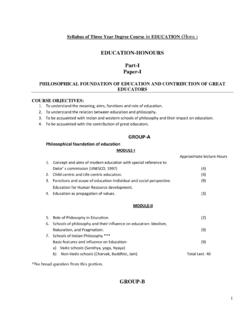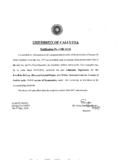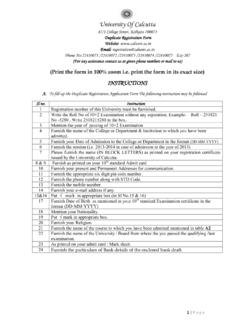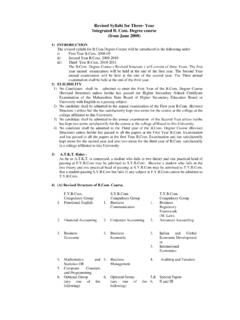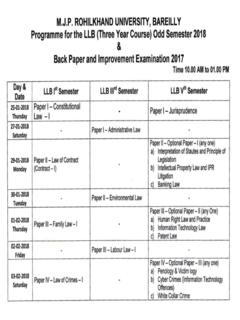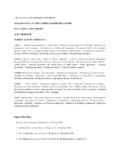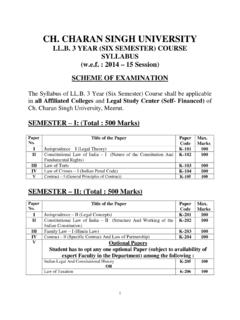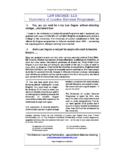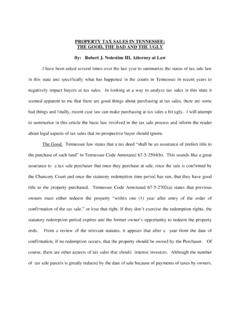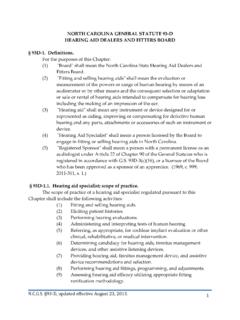Transcription of SYLLABI FOR THREE-YEAR B.Sc. HONOURS & …
1 UNIVERSITY OF CALCUTTA. SYLLABI . FOR. THREE-YEAR HONOURS & general . COURSES OF studies . Chemistry 2010. 2010-2011. CONTENTS. Chem. Hons. course : module names and distribution p2. course contents Hons. course : year 1 p 3-7. Hons. course : year 2 p 8-11. Hons. course : year 3 p 12-19. Chem. Gen. course : module names and distribution p 20. course contents Gen. course : year 1 p 21-23. Gen. course : year 2 p 24-26. Gen. course : year 3 p 27-29. Appendices Appendix 1: Paper-wise distribution of modules (Hons. & general ) p 30. Appendix 2: Instructions about Theoretical Examinations p 31.
2 Appendix 3: general instructions about Practical Examinations p 32. Appendix 4: Specific instructions about Practical Examinations p 33-36. Appendix 5: Recommended list of books p 37-38. 1. Chemistry Hons: Syllabus Scheme in modular form course names and distribution PART I ( year 1), total marks = 200 (Theory = 150, Practical = 50). CHT 11a, 11b, each 25 marks, Theory CHT 12a, 12b, each 25 marks, Theory CHT 13a, 13b, each 25 marks, Theory CHP 14a+14b, 50 marks, Practical PART II ( year 2), total marks = 200 (Theory = 150, Practical = 50). CHT 21a, 21b, each 25 marks, Theory CHT 22a, 22b, each 25 marks, Theory CHT 23a, 23b, each 25 marks, Theory CHP 24a+24b, 50 marks, Practical PART III ( year 3), total marks = 400 (Theory = 250, Practical = 150).
3 CHT 31a, 31b, 31c, 31d, each 25 marks, Theory CHT 32a, 32b, 32c, each 25 marks, Theory CHT 33a, 33b, 33c, each 25 marks, Theory CHP 34a, 34b, 25 and 50 marks, Practical CHP 35a, 35b, 25 and 50 marks, Practical ---------------------------------------- --------------------------------------- Abbreviations: CHP: Chem Hons Practical; CHT: Chem Hons Theory First digit refers to year , second to paper. ---------------------------------------- --------------------------------------- Each CHT Exam = 1 hr for 25 marks, 2 hr for 50 marks, etc. Each CHP Exam = 2-3 hr for 25 marks, 4 hr for 50 marks on each day ---------------------------------------- --------------------------------------- Notes: 1.
4 Each Theory module of 25 marks contains units I (marks = 15) and II (marks = 10). 2. Number of class hours = 25-35 for a 25-mark Theory module, 70-80 for a 25-mark Practical module. 2. Chemistry Hons: course Description year 1. PART I. CHT 11a Unit-I. Radioactivity and Atomic Structure Nuclear stability and nuclear binding energy. Nuclear forces: meson exchange theory. Nuclear models (elementary idea): Concept of nuclear quantum number, magic numbers. Nuclear Reactions: Artificial radioactivity, transmutation of elements, fission, fusion and spallation. Nuclear energy and power generation.
5 Separation and uses of isotopes. Radio chemical methods: principles of determination of age of rocks and minerals, radio carbon dating, hazards of radiation and safety measures. Bohr's theory to hydrogen-like atoms and ions; spectrum of hydrogen atom. Quantum numbers. Introduction to the concept of atomic orbitals; shapes, radial and angular probability diagrams of s, p and d orbitals (qualitative idea). Many electron atoms and ions: Pauli's exclusion principle, Hund's rule, exchange energy, Aufbau principle and its limitation. Electronic energy level diagram and electronic configurations of hydrogen-like and polyelectronic atoms and ions.
6 Term symbols of atoms and ions for atomic numbers < 30. Unit-II. Chemical periodicity I. Periodic table, group trends and periodic trends in physical properties. Classification of elements on the basis of electronic configuration. Modern IUPAC. Periodic table. general characteristic of s, p, d and f block elements. Position of hydrogen and noble gases in the periodic table. Effective nuclear charges, screening effects, Slater's rules, atomic radii, ionic radii (Pauling's univalent), covalent radii. Ionization potential, electron affinity and electronegativity (Pauling's, Mulliken's and Allred-Rochow's scales) and factors influencing these properties.
7 Inert pair effect. Group trends and periodic trends in these properties in respect of s-, p- and d-block elements. CHT 11b Unit-I. Chemical Bonding and structure Ionic bonding: Size effects, radius ratio rules and their limitations. Packing of ions in crystals, lattice energy, Born-lande equation and its applications, Born-Haber cycle and its applications. Solvation energy, polarizing power and polarizability, ionic potential, Fazan's rules. Defects in solids (elemementary idea). Covalent bonding: Lewis structures, formal charge. Valence Bond Theory, directional character of covalent bonds, hybridizations, equivalent and non-equivalent hybrid orbitals, Bent's rule, VSEPR theory, shapes of molecules and ions containing lone pairs and bond pairs (examples from main groups chemistry), Partial ionic Character of covalent bonds, bond moment, dipole moment and electronegativity differences.
8 Concept of resonance, resonance energy, resonance structures 3. Unit-II. Acid-Base reactions Acid-Base concept: Arrhenius concept, theory of solvent system (in H2O, NH3, SO2 and HF), Bronsted-Lowry's concept, relative strength of acids, Pauling rules. Amphoterism. Lux-Flood concept, Lewis concept. Superacids, HSAB principle. Acid- base equilibria in aqueous solution and pH. Acid-base neutralisation curves; indicator, choice of indicators. CHT 12a Unit I. Acyclic stereochemistry Representation of molecules in saw horse, Fischer, flying-wedge and Newman formulae and their inter translations, symmetry elements, molecular chirality.
9 Configuration: stereogenic units i) stereocentres: systems involving 1, 2, 3. centres, stereogenicity, chirotopicity. pseudoasymmetric (D/L and R/S descriptor, threo/erythro and syn/anti nomenclatures (for aldols) ii) stereoaxis: chiral axis in allenes & biphenyls, R/S descriptor; cis/trans, syn/anti, E/Z descriptors (for C=C, C=N). Optical activity of chiral compounds: specific rotation, optical purity (enantiomeric excess), racemic compounds, racemisation (through cationic and anionic and radical intermediates), resolution of acids, bases and alcohols via diastereomeric salt formation.
10 Topicity of ligands and faces (elementary idea): Pro-R, Pro-S and Re /Si descriptors. Conformation: Conformational nomenclature, eclipsed, staggered, gauche and anti; dihedral angle, torsion angle, energy barrier of rotation, relative stability of conformers on the basis of steric effect, dipole-dipole interaction, H-bonding;. conformational analysis of ethane, propane, n-butane, haloethane, 1,2-haloethane, 1,2- glycol, 1,2-halohydrin; invertomerism of trialkylamines. Unit II. Bonding and physical properties Valence bond theory: concept of hybridisation, resonance (including hyperconjugation), orbital pictures of bonding (sp3, sp2, sp: C-C, C-N & C-O system).
